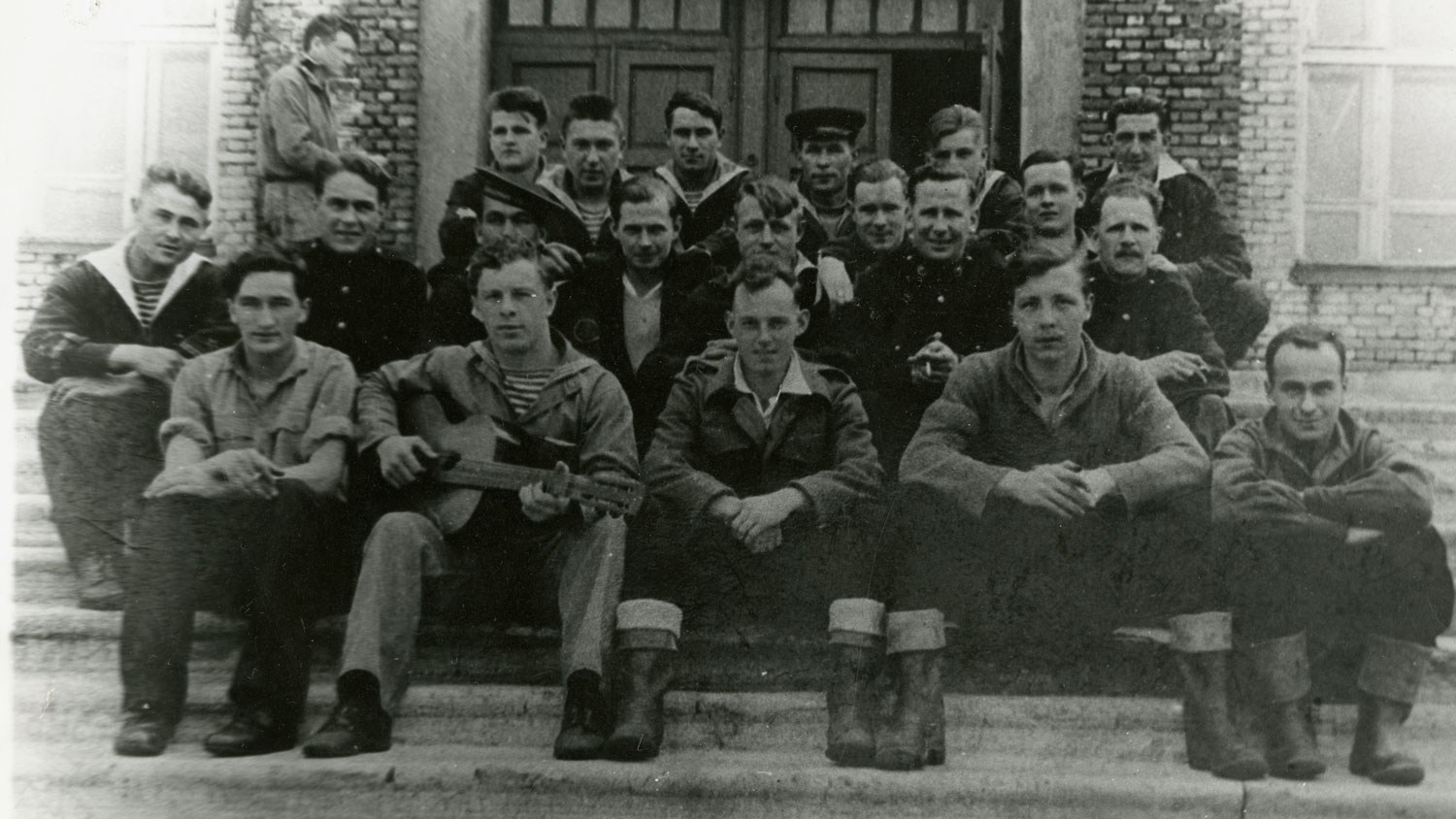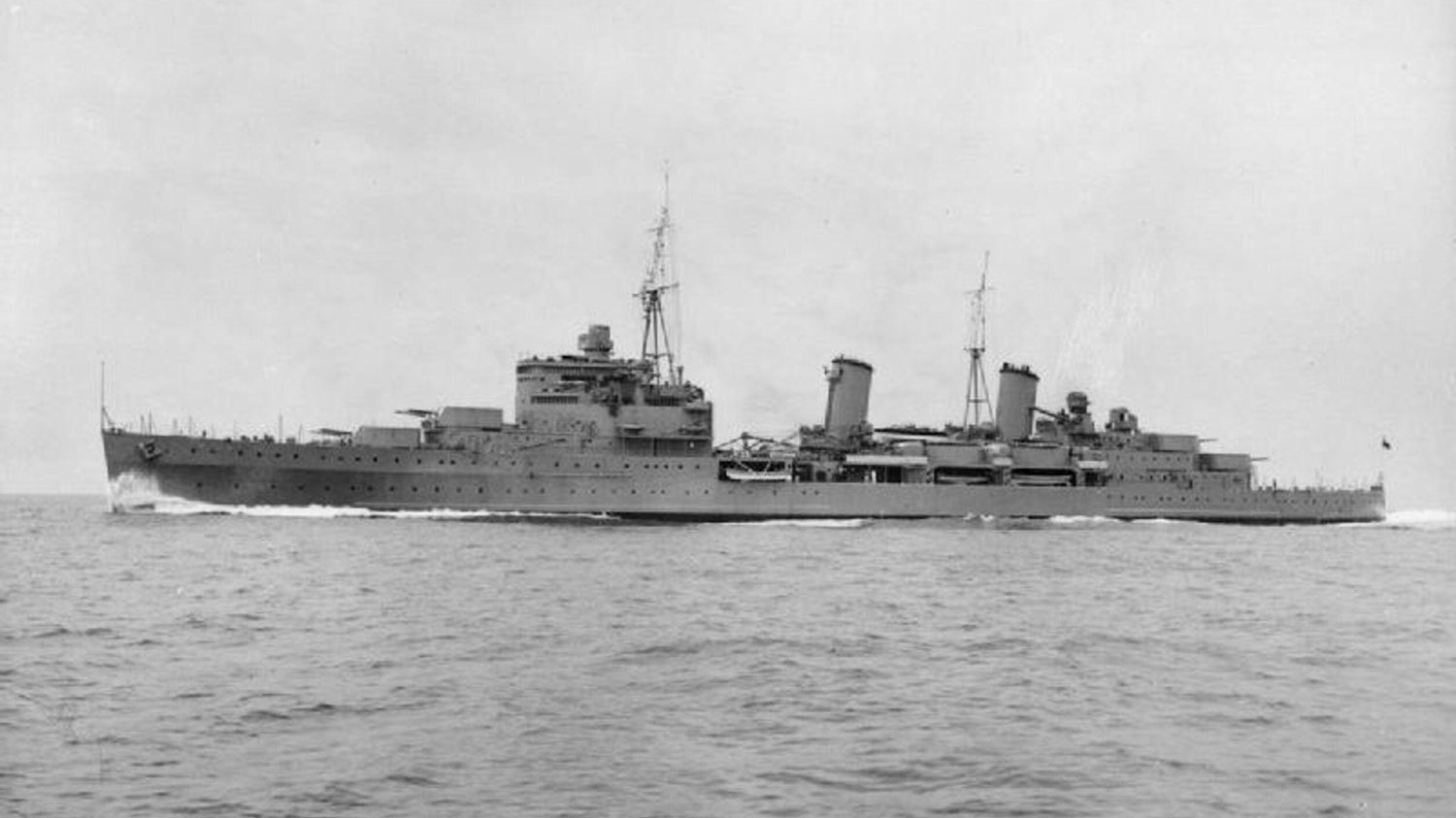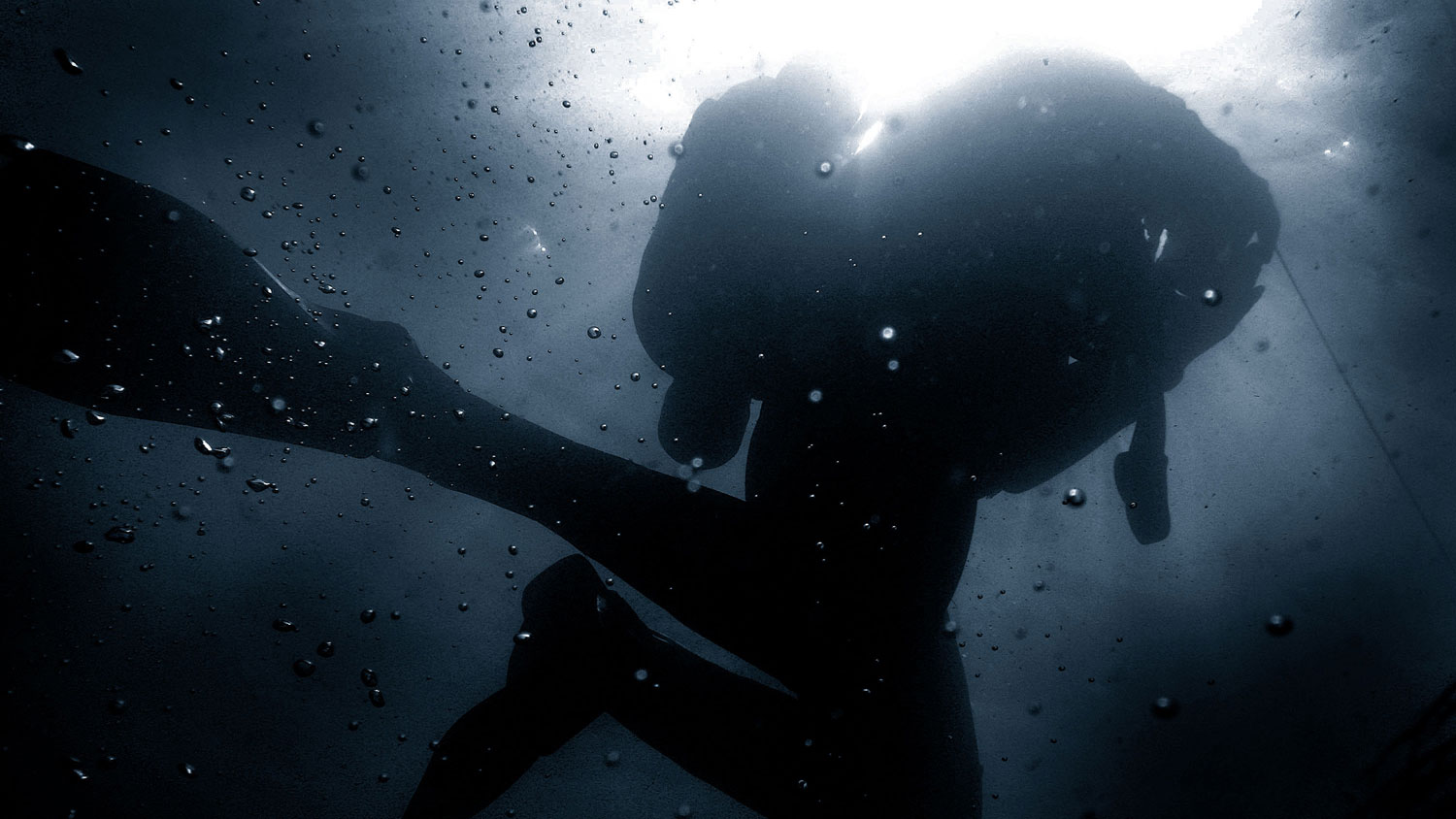
History in focus: The story of HMS Edinburgh's sunken cargo of Russian gold

It was the salvage of the century - the recovery of 431 of the 465 gold bars that went down with HMS Edinburgh in 1942.
The Town-class light cruiser was badly damaged in a torpedo attack by German submarine U-456, sustaining further damage in a follow-up attack by three Kriegsmarine destroyers.
Having been fatally crippled by the German attacks, she was finally scuttled, being sent to the bottom by a British torpedo.
But what of the golden cargo that was being stored in the ship's bomb room?
The hoard was worth £1.5m in 1942, the equivalent of just over £87m in today's money. being intended as payment from Russia to the United States for vital war supplies.
The retelling of the events that led to the first bar being discovered sound like a Hollywood script, but in 1981 after weeks of gruelling work, months of preparation and years of planning, the Russian gold was released from its watery resting place.
The challenge of recovering the gold bars that went down with HMS Edinburgh was taken on by a consortium of British salvage companies, some Royal Navy veterans and investors.
Why was HMS Edinburgh carrying gold and why did it sink?
In 1942, the Arctic convoys were barely surviving in treacherous, freezing temperatures to routinely bring vital supplies, equipment, weapons and ammunition to help the Soviet Union in its fight against Nazi Germany.
The route was described by Prime Minister Winston Churchill as the "worst journey in the world".
One of the ships regularly taking on this deadly task was HMS Edinburgh, the sister ship of HMS Belfast, which is now a maritime museum on the River Thames in London.
In Murmansk, in northwest Russia, on 25 April 1942, 5.5 tonnes of Russian gold was loaded onto the vessel as payment from Moscow to Washington.
During the loading of the gold, one crew member predicted the ship would sink when he saw red paint from the crates mix with melting ice, creating an alarming effect similar to blood.
It was only a matter of days before HMS Edinburgh was spotted in the Barents Sea by a German reconnaissance aircraft, after which she was torpedoed by U-456.
While trying to return to Murmansk, the light cruiser was attacked again, this time by three German destroyers whose torpedoes crippled the already badly damaged ship.
Former crew members remember seeing the quarterdeck "ripped up like a sardine tin" and the guns of the white turret poking through the deck.
Fearing these were their last moments and on the orders of Rear Admiral Stuart Bonham Carter, the men abandoned ship and were rescued by minesweepers HMS Harrier and Gossamer.

Realising the ship would not survive, F-class destroyer HMS Foresight was ordered to sink HMS Edinburgh, a haunting sight that stayed with those who escaped her for decades.
On 2 May 1942, the 57 men who didn't survive the attack sank with their ship and the gold to the bottom of the Barents Sea, making HMS Edinburgh an official war grave.
The idea that anyone would attempt to recover the gold bars from such a sacred place felt like grave robbery to the families of those who died and were entombed in HMS Edinburgh.
In response to this news, Bill Daly, the secretary of the Edinburgh survivors' association, wrote a letter to the Ministry of Defence.
He said: "I had letters and telegrams from about 200 survivors and from families of chaps who have since died and an overwhelming majority, around 80 per cent, were quite adamant that the ship should remain as a war grave and be left in peace.
"It's a decision I welcome. I wouldn't like the grave of a close relative to be messed around and our comrades who are entombed in that ship are entitled to the same protection and respect."
For 39 years their wishes were granted, but only because the technology at the time made it impossible for divers to descend to a depth of 800 feet in perilous, freezing waters to recover the gold.
The recovery of Stalin's gold from Davy Jones' locker
Despite the desire by some for HMS Edinburgh to be left in peace, there were others who dreamed of recovering the gold.
Since the beginning of seafaring, stories of the quest for hidden treasures and skirmishes with pirates have been told - but this time, with careful planning and the right skills, the gold wasn't something in a storybook, it was within reach.
The leading-edge saturation diving technology of the early 1980s meant divers could now descend 1,000 feet below the surface of the ocean, and one such diver, Keith Jessop, was keen to take on the challenge.
But he first had to find the shipwreck - and that meant a lot of research.
At the Public Record Office in London, Mr Jessop discovered, thanks to Admiral Carter's report of the sinking, what he believed to be HMS Edinburgh's final resting place.
Combined with tales from Norwegian fishermen of getting their trawlers caught on large unknown objects at the bottom of the ocean in the same area, Mr Jessop was convinced he had discovered the location of the wreck.
To pull off a salvage of this scale, Mr Jessop needed permission to search for the gold from the British and Soviet governments plus the Salvage Association and significant financial backing as the whole venture could cost up to £14,750,000 in today's money.
With permission granted, he assembled a group of equally ambitious men, all with a desire to discover the gold that sunk with HMS Edinburgh.
These included several former Royal Navy men such as Lieutenant (Retired) James Ringrose, who served with King Charles on HMS Bronington in 1976, plus Royal Navy veterans turned salvage experts Mike O'Meara and Michael Stewart.
Mr Stewart was put in charge of the salvage by Aberdeen diving company Wharton Williams, which was founded by saturation diving experts Ric Wharton and Malcolm Williams.
In an interview with The Scotsman in 2010, Mr Wharton spoke of the ambitious HMS Edinburgh salvage saying: "It was the maritime equivalent of a Moonwalk."
The systems used for deep sea diving aren't too dissimilar from the equipment used by astronauts in space.
The deep sea divers working on salvaging gold from HMS Edinburgh lived and worked for up to 30 days at a time in a controlled environment within a bell and chamber system.
These expensive systems are designed to maintain high-pressure levels to aid the prevention of decompression sickness, which can happen when divers come up too quickly from deep water.
The divers breathe a mixture of helium and oxygen which helps prevent nitrogen narcosis – a condition that can cause confusion and disorientation at depth – but also makes the voices of divers high-pitched as though they have inhaled helium from a balloon.
This was something that soon became part of their everyday lives.

Next on the list for Mr Jessop was securing a diving ship
At this point, German shipping company OSA joined the consortium and agreed to the traditional salvage terms – no cure, no pay – which meant that they would receive no payment if they did not find any gold.
All involved in the salvage operation knew they were taking a significant financial risk and might end up with nothing if the gold was not recovered.
To establish if the gold was where they thought it was, Kip Punch from marine surveying company Racal Decca joined the team.
After thorough research, Mr Punch decided reports from British minesweeper HMS Harrier about HMS Edinburgh's whereabouts in 1942 were the most accurate.
The first sighting of HMS Edinburgh since she sank
Despite Number 10's concern about the possible desecration of a war grave, the Government agreed to approve a controlled salvage to avoid the gold being taken by someone else.
In May 1981 the salvage operation began in the Barents Sea.
A BBC documentary, which aired on Christmas Day 1981, followed the progress of the salvage and captured the moment the men realised they had at last discovered the final resting place of HMS Edinburgh thanks to the use of sonar equipment.
Elation suddenly turned into action as the salvage mission got underway in earnest.
To ensure they were as prepared as possible for the dive, the men visit HMS Edinburgh's sister ship, HMS Belfast.
They inspect her in great detail, so they know what they would face 800 feet below the surface of the sea in pitch black with only a head torch to help them see.
There was no way to know if the gold was still in its watery tomb, so the plan was to cut through the armoured plating protecting the bomb room where the bars had been stored and begin the search.

Thanks to the access granted to HMS Belfast, Michael Stewart, a former Royal Navy diver, spent months inspecting every intricate detail of the bomb room.
His found it was imperative that the divers cut in exactly the right place because the bomb rack behind the armoured plating could still hold live munitions.
In August 1981, the dive support vessel Stephaniturm set sail on a five-day journey from Peterhead towards the Barents Sea.
The vessel was carrying gas containers for the dives, other specialist equipment and a team of men eager to discover whether their extensive planning and research would yield the expected tens of millions of pounds they were hoping for.

What's life in a compression chamber like?
Royal Navy divers will be familiar with what it's like to dive at great depths and for long periods.
The men who dived down to HMS Edinburgh spent up to four weeks at a time in a compression chamber, allowing their bodies to get used to working deep in the ocean, a high-pressure environment both mentally and physically.
These chambers would travel in and out of the sea according to a carefully organised shift pattern.
When deep sea divers enter saturation, it is said there is no immediate difference in how they feel, but the work is incredibly taxing and the tiredness doesn't disappear.
During the HMS Edinburgh salvage, the men entertained themselves by reading or playing games with each other and attempted to recoup some of their energy before the next dive by sleeping.
The salvage of HMS Edinburgh begins
Each dive to HMS Edinburgh, called a bell run, involved the use of 200-foot-long life-supporting umbilicals which supplied the diver with gas, the ability to communicate with the boat and hot water to prevent them from becoming unconscious due to the freezing temperature of the Barents Sea.
The salvage began on 3 September and the team members were thrilled to learn the warship was in good condition despite being underwater for nearly four decades.
To pay his respects to the men who died when the warship sank, the first diver observed a two-minute silence next to HMS Edinburgh, a poignant reminder of the sacrifice made by those who lost their lives.
The divers faced a brutal task ahead of them as they had to work all day and all night for weeks to see a glimpse of success.
And they were not sure what they would face once they broke through into the bomb room.
Searching the area meant carefully inspecting level after level of wreckage and silt, surrounded by live ammunition, to discover the gold.
After a while, the divers began sending small artefacts up to the surface, such as a teapot that had remained untouched inside the ship for nearly 40 years.
Three weeks later, on 16 September 1981, the divers' luck changed and after weeks of exhausting diving in hazardous conditions, all the hard work paid off.
In an exhilarating moment, Zimbabwean deep sea diver John Rossier, 27, screamed from below: "We found the bar, we found the bar, we found the bar!"
Joy erupted in the support boat as the words they had longed to hear were finally uttered from 800 feet below, and the gold bar was brought up to the surface to a hero's welcome.
At this point, more gold bars were discovered rapidly.
It was gruelling work, but 40 gold bars were brought up at a time in a metal cage.
Barrie Penrose, who was on board the Stephaniturm at the time the gold was recovered, reported that Mr Jessop said: "That's one in the eye for all the people who have been calling me a blind fool for the past six years."
By the time hurricane gales put an end to the salvage operation on 5 October, the team had recovered 431 of the 465 gold bars, worth a staggering £45m in 1981 money.
Another 29 bars were brought up in 1986, leaving five unaccounted for.
Extensive research, extreme financial risk and the bravery of men willing to enter the unknown had paid off.
Stalin's gold was divided between the Soviet Union, Britain and the consortium of men who had made their dream a reality.
They didn't forget to pay their respects though to the men who had guarded the gold in their watery grave for decades.
The team held a ceremony on board the Stephaniturm and paid tribute to "the officers and men of HMS Edinburgh who died on or shortly before that fateful day nearly 40 years ago when, after a gallant fight, HMS Edinburgh sank here beneath the Arctic waters of the Barents Sea".
Four decades after the sinking the group had completed one of the most successful salvage operations in maritime history.







